Click on the map or the links for more information about the various locations along the route.
Orange Route - Clockwise: 1.5 hour
Purple Route - Counter clockwise: 1 hour
Blue Route: 1 hour
Welcome to the Leidseplein. In the middle of Amsterdam, with the Vondelpark just a stone's throw away, this square is bustling with bars, restaurants, clubs and theaters.
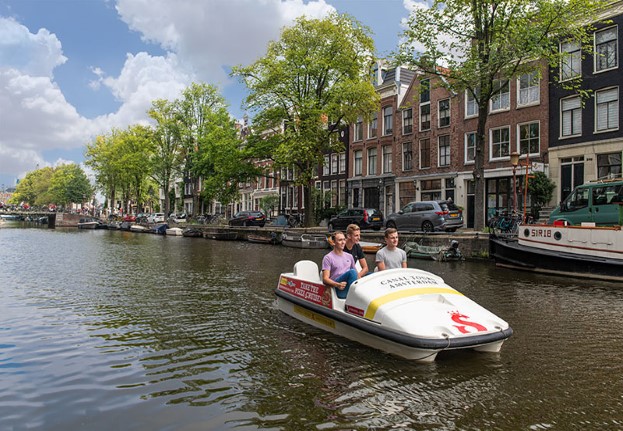
Click on the map or the links for more information about the various locations along the route.
Orange Route - Clockwise: 1.5 hour
Purple Route - Counter clockwise: 1 hour
Blue Route: 1 hour
Orange 1 & Purple 8: Rijksmuseum
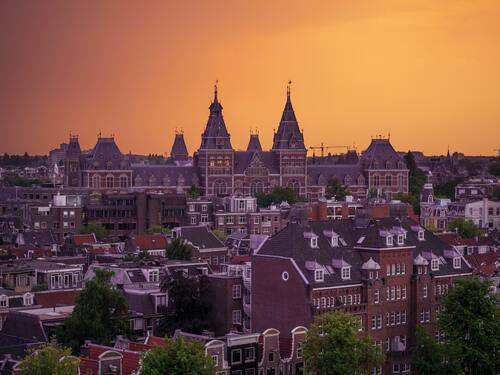
The Rijksmuseum is one of the largest museums in Amsterdam. Built in 1876 to the design of architect P.J.H. Cuypers, and opened in 1885. Here you can marvel at the world-famous Night Watch by Rembrandt, the iconic paintings by Johannes Vermeer and Frans Hals and other Dutch masters.
Orange 2 & Purple 7: Weteringwaterkeringsluisje
This little lock from 1657 is part of Amsterdam's impressive water control system. The locks are still sometimes used although they are fairly useless nowadays, only at high tide this lock is closed
Orange 3 & Purple 6: Spiegelgracht
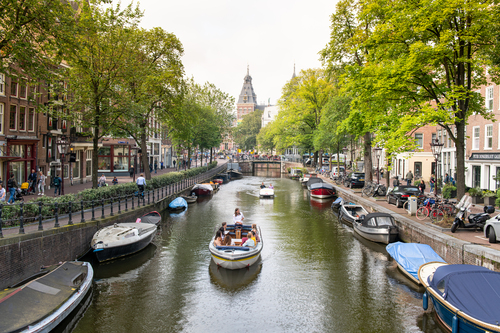
The Spiegelgracht, located opposite the Rijksmuseum, together with the adjacent Nieuwe Spiegelstraat, forms the heart of the Spiegelkwartier, an area with many antique stores and galleries. The canal was dug in 1663 as part of phase 2 of the ring of canals.
Orange 4: Deutzenhofje
Hofjes were founded by wealthy citizens for the elderly. The Deutzenhofje at numbers 857-859 is one of the largest in Amsterdam. Agneta Deutz detested her son's behavior and decided to disinherit him. The hofje was founded in 1692 from her estate.
Orange 5: Stork
Do you see the stork above the door of one of the buildings (on the corner)? Indeed, a midwife used to live here
Orange 6: Amstel Church
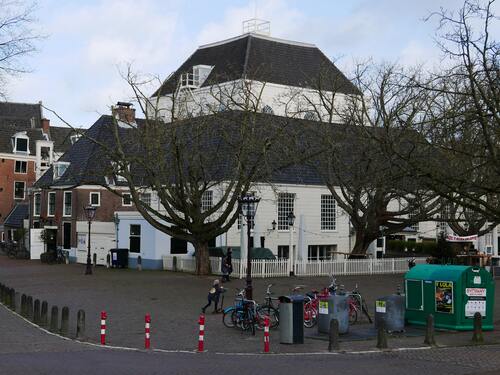
The large wooden square building on the Reguliersgracht was an emergency church. It was erected in 1670 in anticipation of building blocks. In Napoleon's time the building served as a horse stable.
Orange 7: Arch Bridges - Photo alert!
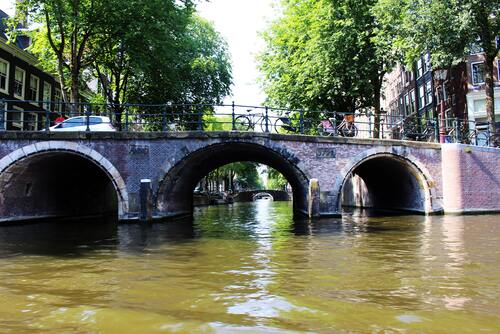
Across the Reguliersgracht 7 identical bridges were built in a straight line. In 1901 they wanted to fill up the canal, but thanks to a protest group this beautiful vista was preserved. Perfect for a photo!
Orange 8: Arion
Keizersgracht nr. 615 has a beautiful neck gable, with the Greek Arion on it. He was famous for playing the lyre. Once he was in danger of drowning and was saved by a dolphin, lured by his beautiful music.
Orange 9 & Purple 5: Leidsestraat
The Leidsestraat is a busy shopping street and is the second most expensive street in Monopoly. Only the Kalverstraat is more expensive.
Orange 10 & Purple 4: Facades Leidsegracht
At Leidsgracht nrs 72-78 you can see the different types of facades next to each other: a neck gable, a frame gable, a warehouse with spout gable and a stepped gable.
Scroll down for a photo of all facades.
Orange 11 & Purple 3: Paradiso
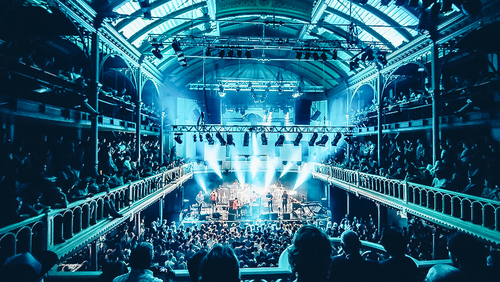
Here you cruise past the back of pop temple Paradiso, housed in a former church. This concert hall is famous for its special atmosphere and acoustics. World stars such as The Rolling Stones, Prince and Nirvana once performed here. In addition to concerts, dance parties and other events are held here.
Orange 12 and Purple 2: Vondelpark
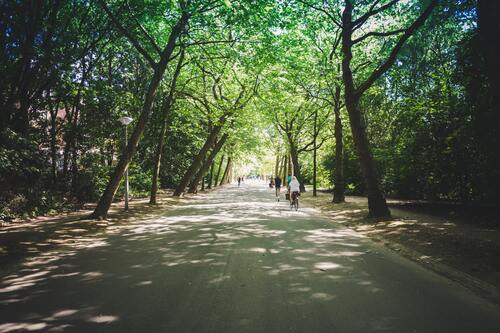
You are now near the entrance to the largest city park in Amsterdam: the Vondelpark. It was laid out in 1865 by garden architect L.D. Zocher. In addition to lots of public greenery, there are also nice restaurants, an outdoor theater and playgrounds to be found. With a length of 3.3 km. the park offers all the place for residents and tourists to relax.
1. Starting point & ending point - American Hotel
The famous hotel is located on the Leidseplein and is situated next to the Stadsschouburg (not visible from the water) of Amsterdam. The famous Cafe in the hotel (American) has the oldest reading table in Amsterdam.
2. Singelgracht - Old city border
The Singelgracht was the city boundary in the 19th century. On the other side (left), where there is now a busy street, the pastures began. The first houses were built in the same style as the canal houses
3. Europarking & Waterkant
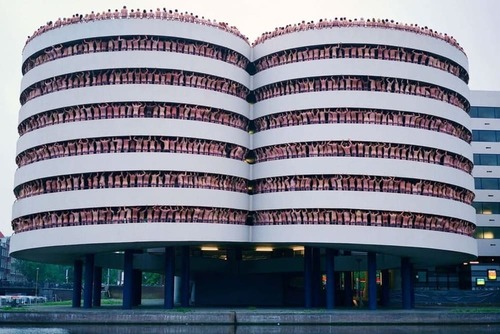
Project of Spencer Tunick in 2007 which was called Dream Amsterdam Foundation
The building consists of seven floors with a total of 700 parking spaces and was designed by the Dutch architect Piet Zanstra. The building has been nicknamed "Zanstra's buttocks" because of the spiral ramps. Because of these ramps, it is popular with skaters. Since 2014, café Waterkant - named after the quay along the water of the Suriname River in Paramaribo - has been located under the "wokkels".
4. Artists
The Lauriergracht is an artistic canal. Painters Govaert Flinck and Jurriaen Ovens, both pupils of Rembrandt, had their studios at no. 27. The Amsterdam painter George Hendrik Breitner lived at nr. 8. Today, at No. 6, the studio of a violin maker is located.
5. Red Deer Brewery
This former brewery, once located at Prinsengracht Nos. 353 to 357 and recognizable by the medallions with deer, was the first in Amsterdam not to use canal water for brewing beer. Fortunately, many followed suit.
6. The 9 streets
Since the 90s, these nine streets (3x3) on 4 canals are full of picturesque monuments, authentic stores and special restaurants. Once intended as a counterpart to the Jordaan.
7. Looiersgracht
The canal was created when from 1612 on the Brouwersgracht the ring of canals was dug in a southerly direction. From the beginning, the Looiersgracht was destined for tanneries, because the city government wanted to concentrate these businesses in one place, due to the strong detrimental effects of this industry on the living environment of local residents.
8. Tetje de Jong bridge
The bridge at the end of the Looiesgracht is named after Theodora de Jong (1918-1999). She was the first paid female police commissioner in the Netherlands. In 1964 she was appointed police commissioner in Amsterdam. This bridge is close to the 'Hoofdbureau van Politie' on the Elandsgracht.
9. The Jump
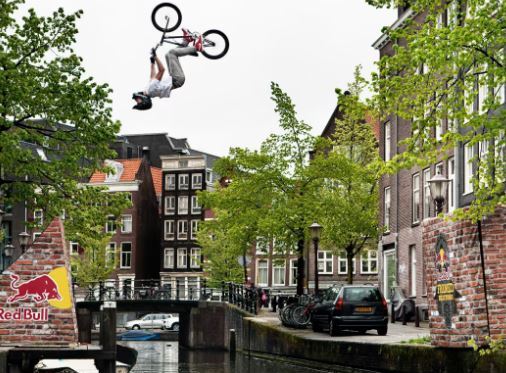
In 2013 Daniel Wedemeijer jumped with a real back flip here on his BMX over the Passeerdersgracht. Would you dare to make such a spectacular jump?
10. Amsterdam facades
At Leidsgracht nrs 72-78 (on your left) you can see the different types of gables next to each other: a neck gable, a frame gable, a warehouse with spout gable and a stepped gable. Scroll down for a picture of all facades
Frame Gable:
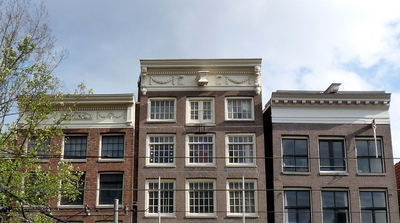
Clock gable:
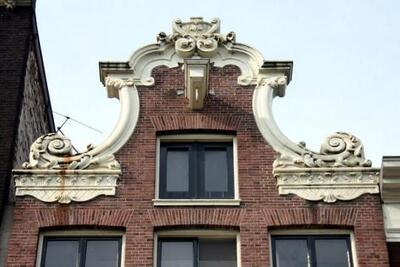
Trap gable:
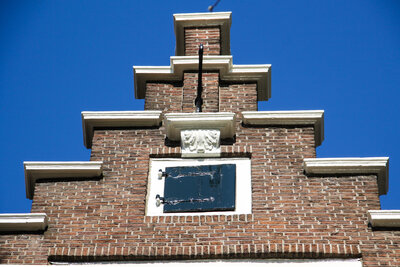
Neck gable:
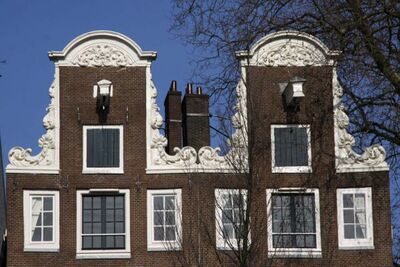
Warehouse with spout gable:
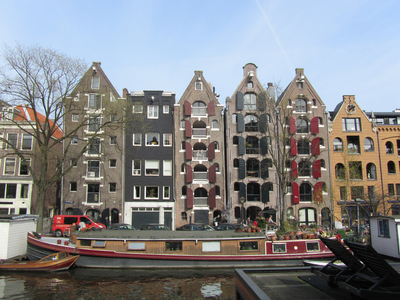
Step gable:

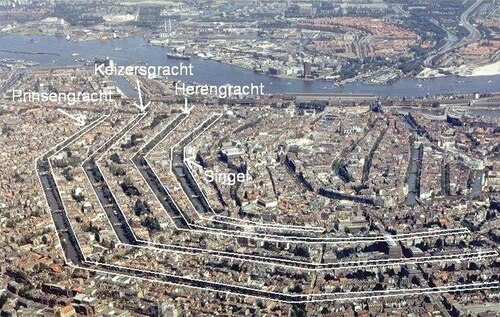
Amsterdam was the richest city in the world because of trade during the Golden Age, from 1575 to 1675. The lower you lived on the map of the city the lower your status was. In other words, the closer to the heart (the Dam) the richer, the closer to the defensive wall the poorer.
The Herengracht was for the richest (merchants/regents of e.g. VOC/WIC), a circle lower Keizersgracht for the middle class like bankers and Prinsengracht for lower merchants and warehouses/industry and then the Jordaan for the poorest (immigrants and workers).
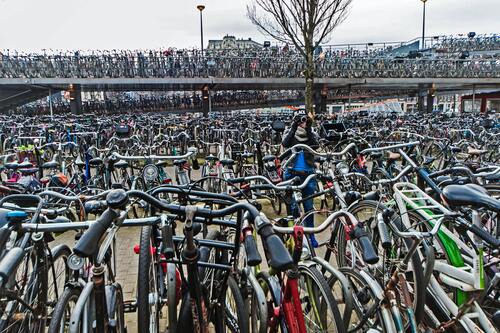
Next to Central Station is the most famous bicycle shed in the city. It can hold as many as 2500 bicycles.
Annually, an average of 15,000 bicycles end up in the canals, of which the municipality manages to fish out less than a third.
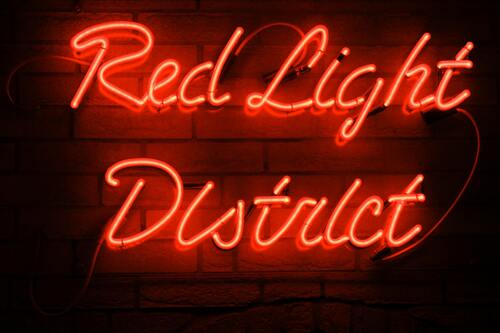
The Red Light District is the most famous red light district in the world.
The history of the area dates back to the 14th century. Back then, Amsterdam was one of Europe’s most important trade centers. The harbor was very close, there were many sailors – these are the main reasons why prostitution actually started. Amsterdam quickly became a magnet for the oldest profession in the world
Currently there are just under 300 windows left and a number of brothels, sex stores and sex theaters. There are also many cafes and bars in the area, and of course coffee shops.
Safe neighborhood
Prostitution is legal and brothels are regulated. Police walk around regularly for safety, and many streets have security cameras, making this one of the safest neighborhoods in Amsterdam.
Besides all the entertainment, it is also a neighborhood where many people live, study and work.
Blue Lights
Most of the lights you will encounter are red, however, you will also find a blue light here and there. Under these lights are transgenders.